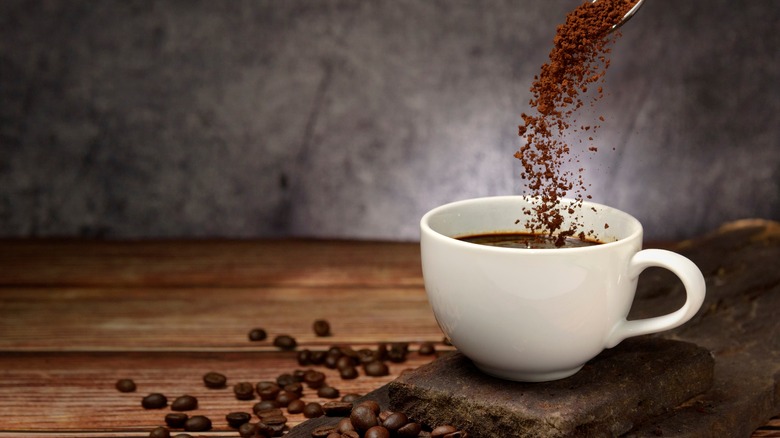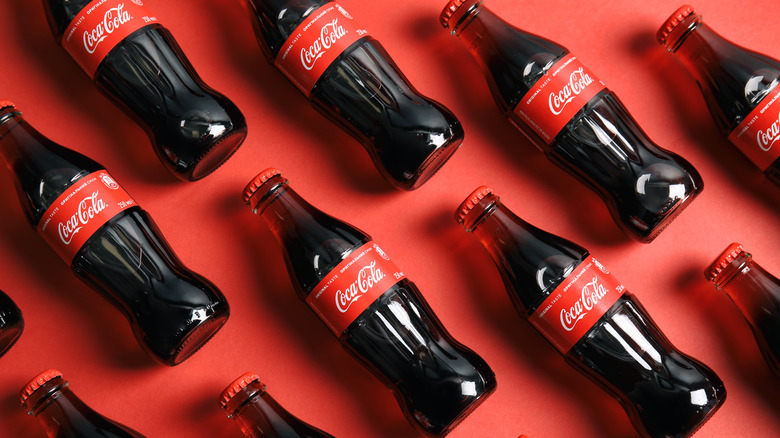What Happens To The Caffeine Removed From Decaf Coffee?
Coffee lovers know that chugging multiple cups a day can make you feel a little overstimulated. That's why a plethora of coffee alternatives have popped up over the years, including tea-based drinks like matcha, green tea, and black tea. Compared to one cup of coffee, which Healthline says has about 95 mg of caffeine, a cup of matcha has only around 60 mg, while green and black teas have about 15 and 60 mg, respectively (via Adagio Teas).
Contrary to what "Gilmore Girls" may have us believe, drinking endless cups of brew may not be good for you. The U.S. Food and Drug Administration (FDA) says consuming 1,200 mg of caffeine (around 12 cups) can lead to dangerous reactions like seizures. However, they note it's generally safe to have up to 400 mg of caffeine per day, although your hands may start to shake long before you reach that.
For those coffee addicts who just can't give up the taste of freshly brewed java, decaf coffee has become a popular morning beverage substitute. Although its energy-giving properties have mostly been removed, WebMD notes that a cup of decaf coffee still has 2 mg of caffeine on average, 3% of what the coffee beans contain. But where does the other 97% of removed caffeine end up?
Pure caffeine gets recycled
It turns out that decaf coffee may be as profitable as it is caffeinated version — and not just because of the cups it sells. According to The Wall Street Journal, when the caffeine is removed from coffee beans, many companies sell it to soda and pharmaceutical institutions. Have you ever wondered how your can of Coke or Pepsi gives you that buzz? Pure caffeine looks like white, odorless crystals when removed from the beans, which then get mixed into sodas and energy drinks, according to NPR.
There are several methods by which coffee companies do this, but Scientific American reports that every decaffeination process includes moistening the beans so that the caffeine dissolve and can be extracted. The most common processes, according to Britannica, use chemical solvents like ethyl acetate to rinse the caffeine from the beans. If you've never heard of any of these methods, or companies, you're not alone. NPR notes that many of these establishments are unknown by most Americans, who see their products under other brands' labeling, although the world's biggest decaffeination plant is in Germany.
It's also important that the caffeine is removed while the beans are still green, as Chris Stemman, executive director of the British Coffee Association, told BBC. "If you were to try and decaffeinate roasted coffee you'd end up making something that tastes a bit like straw," he said. And that sounds like one flavor we'd like to leave out of our java, decaf or not.

